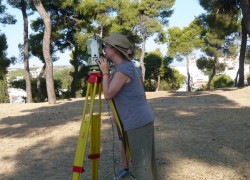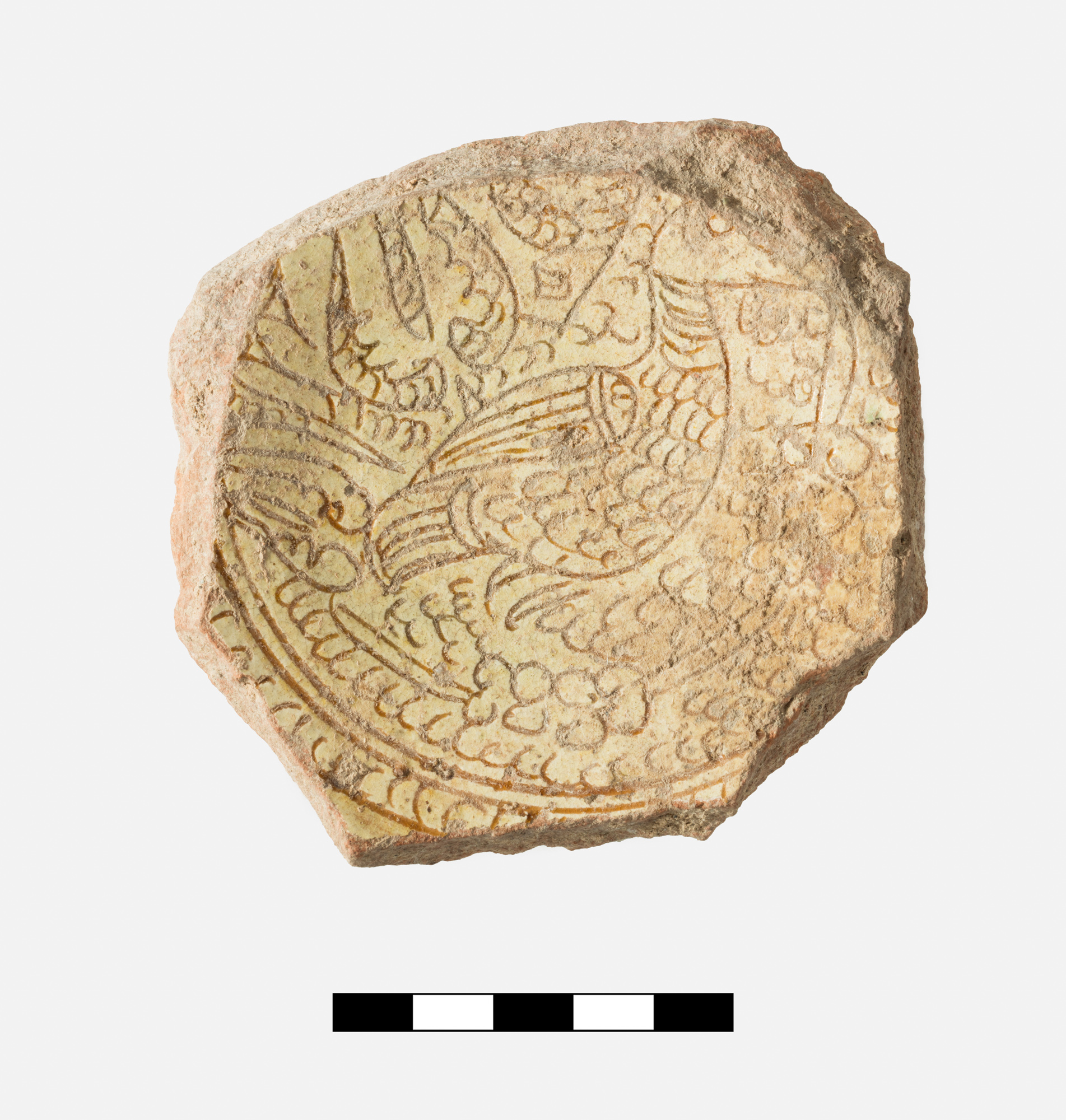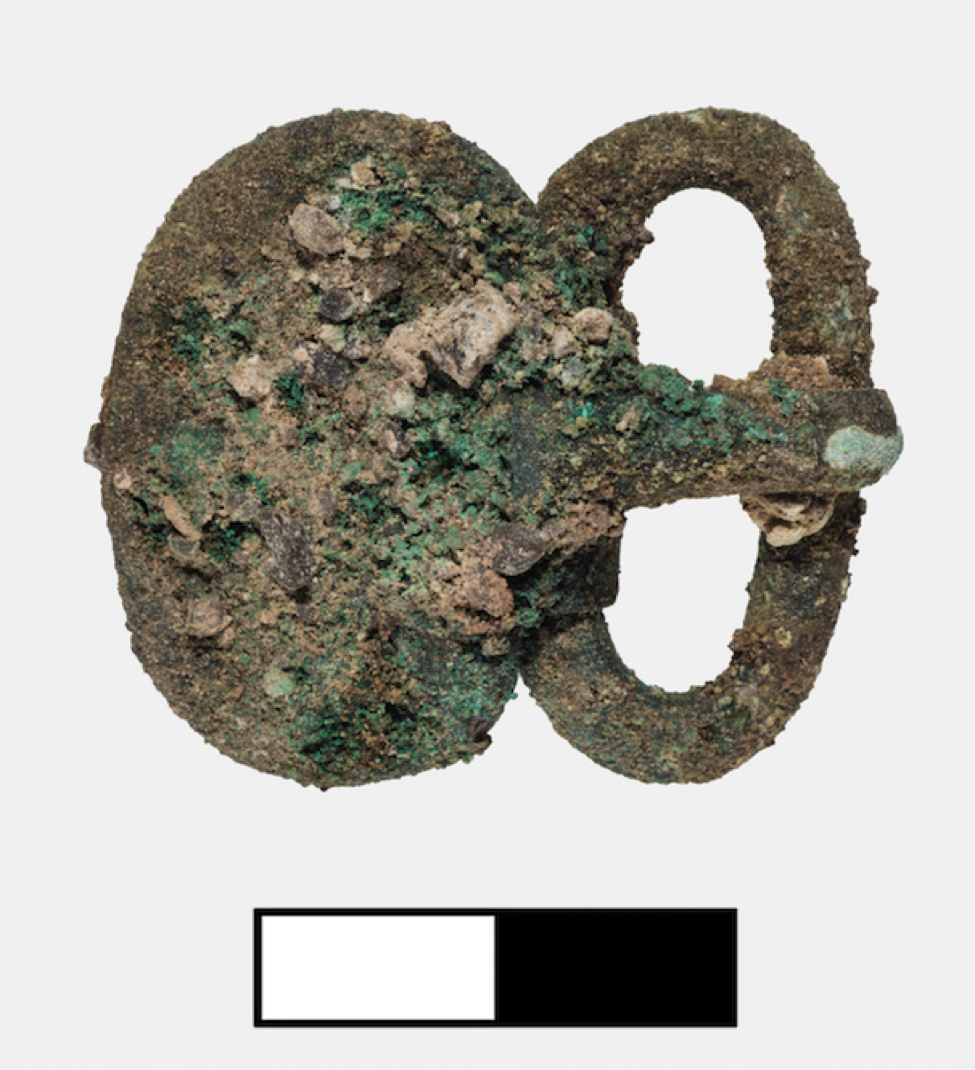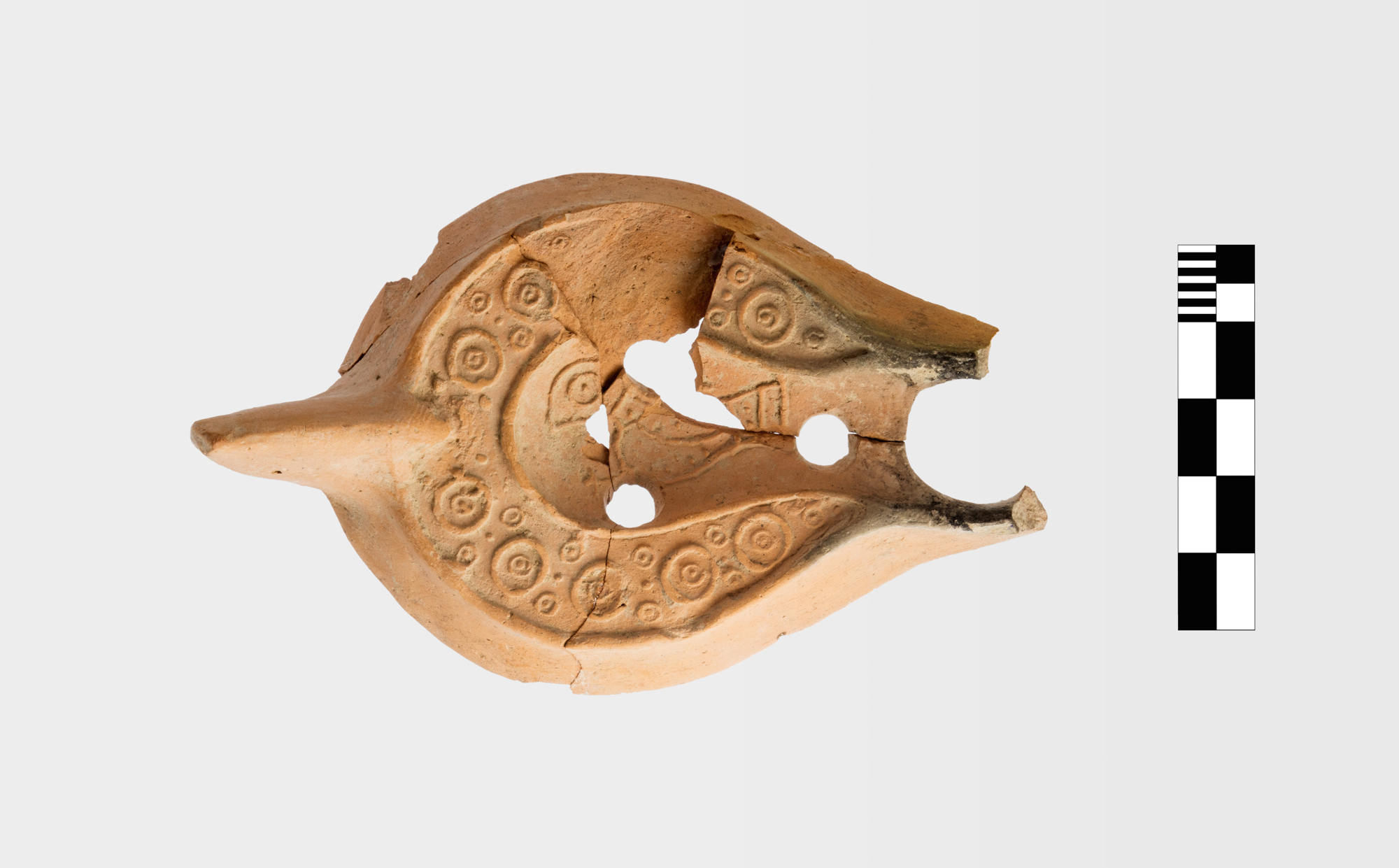Surprises in Excavations on the Ismenion Hill

Professor Larson measures some points with the theodolite on the Ismenion hill
“The Ismenion Hill was a place recorded in literature,” explains archaeologist Dr. Stephanie Larson, “Herodotus went there. Famously. Everybody still talks about it because he seems to have spent a lot of time there compared to many of his other travels.”
From 2011-2016 the Ismenion Hill, a low hill in southeast Thebes, has been the site of an excavation led by Stephanie Larson and Kevin Daly of Bucknell University. In the Bronze Age it was the site of a small Mycenaean cemetery, and later, upon the organization of Thebes into an urban center, the Ismenion hill was chosen as the site for the extra-urban sanctuary of Apollo Ismenios. As early as the 8th century BCE a temple may have been built there, followed by an archaic temple and a fourth-century temple. As Christianity took hold in Thebes after the fifth century CE, the site became a Byzantine cemetery in use until the Turkokratia.
For his part the ancient Greek traveler Herodotus wrote a lot about the inscriptions he saw on the hill. “He described three inscriptions— tripod bases, for honorary tripod dedications, from the legendary period of Theban early history,” explains Larson, “And one of the things that we may be able to connect with Herodotus’s account, is a large cutting in the bedrock, found slightly to the east of where the temple would have stood. […] It’s a square cutting, perfectly square, and would be the right size exactly for a tripod base.”
The excavation initially had hoped to trace the extent of the archaic temple to Apollo and looked to find evidence of the superstructure. Instead they found some small but important pieces and have identified additional pieces that were lost in the Thebes storerooms from the excavations in the 1910s. With these fragments they were able to recalculate the Doric dimensions of the temple.
But to their surprise the excavation ended up spending most of their time focusing on the Byzantine era cemetery on the hill. “We didn’t find as much as we wanted from those [archaic and classical] periods. And that was kind of depressing,” reflected Larson. “But on the other hand we are not going to privilege any period. We are not going to dig through layers quickly because we are more interested in something else, because that’s not what archaeology is about.”

Byzantine Sgraffito Duck on Interior of Large Bowl, late Byzantine, mid 12th- early 13th century CE
In the first two years of the excavation the team dug in the parking lot to the north west of the hill. “We found an amazing bothros in this area and in the bottom layers we had a beautiful deposit of what may have been a byzantine house of the mid to late 13th century,” recalled Larson. “This is important because this is the time period that Thebes was controlled by outsiders, either Crusaders or Catalans.”
In this bothros the team found diagnostic pottery, coins from the period, and domestic cooking wares. “And while that may not sound exciting it is actually quite exciting,” Larson smiles, “because we have these diagnostic wares together with the coins and the cooking wares, and so soon we will publish a typology of cooking fabrics of the period. This will be useful for excavations all over central Greece in the future, because when Byzantine cooking vessels emerge without other diagnostic material, excavators can look to this publication and know how to date these cooking pots.”
The Byzantine cemetery itself also answered a significant question about the classical temple—when was the temple abandoned and transformed into a pagan site? The team got closer to an answer to this question in 2013, with the excavation of a grave that had been dug right into the bedrock, in the far corner of the cella or inner chamber of the temple. Most of the graves on the Ismenion Hill have multiple burials in the grave, “So every time a new person was buried in the grave the previous contents of the grave would be dug up, and so everything would become all topsy-turvy and confused,” says Larson, “on this site on the whole there isn’t really much stratigraphy in the graves from any period. One exception, however, is this grave dug into the cella, because a later building existed in the center of the cella and a foundation wall preserved the lowest skeletons of the grave from further intrusion.” The grave had three articulated skeletons in the bottom. The pottery and their belt buckles found inside indicate the possible date of the 7th century CE.

Early to Middle Byzantine Belt Buckle from grave, complete, 7th century CE
“So that means by the 7th century CE, the temple in this area of the hill not exist; it was gone, and the area had become a cemetery, since there were also other continguous graves in the area,” explains Larson. “When we found this belt buckle, we were pretty thrilled, because it meant that the Ismenion hill had become a Christian cemetery by this period. And that makes a lot of sense in central Greece, particularly given the existence of the church of Saint Luke across the street.”
Since 2011 the excavation has fully excavated over thirty five graves from the early and middle Byzantine periods, with some late Byzantine burials as well. “We are excited because the Middle Byzantine period is severely underrepresented in publication especially regarding burial practices, partly because of past disinterest in this period,” says Larson. “So what we’re doing now of course is analyzing every single thing we can from the graves. Dr. Maria Liston, one of 2016-17’s two Whitehead Professors at the School, is doing all our bone work this year, and she has revealed a plethora of information about the health concerns of Thebans in the Early and Middle Byzantine periods. And it’s a pretty gruesome tale, as you might expect.”
One set of burials in particular departs dramatically from the standard rectangular graves found on the site. On the east side of the hill, about five meters beyond the east face of the temple, the team found two ovular graves undercut into the bedrock. The pottery and coins indicate a Middle Byzantine date, between the 7th and 8th centuries CE. “All these individuals in these two graves were articulated, meaning they had not been dug up one after the other over the course of say 50-100 years,” explains Larson, “These graves contain 16-17 individuals, of all genders and ages. We thus think that they were buried together, all at once. So these burials represent the onslaught of a sickness or a plague at some point. If you want to put it together with the literary record we have, the most prominent plague is the Justinianic plague of the 6th century, although I am not sure that the pottery will support this early date, so we are sending some materials from these individuals for pathogen testing.”
.jpg)
Coin, Billon denier tournois, minted at Naupaktos ca. 1301-1303, Despot Philip of Taranto (1296/8-1314)
These two graves differ from the others on the Ismenion hill not only in skeletal articulation and their deep undercutting into the bedrock, but also in the material inside—the graves were filled with coins. “In the other graves we found 10-12 coins total in each grave. These two graves doubled the coins we had revealed from the whole excavation; there were about 30 coins in one grave,” said Larson. “So given the massive increase in the number of coins in these burials and the fact that the individuals seem to have been buried at the same moment-- there seems to have been some sort of event.”
The excavation is especially proud to have revealed several items now on display in the Thebes Museum: a small red-figure vase with sphinxes on it, a series of faceted blue glass beads from Middle Byzantine graves, and what appears to be an early evil-eye bead. This bead, found in one of the “plague graves,” is made of a yellow glass, and one side contains a white circle surrounding a blue internal circle. “It seems to be an evil eye bead, it’s very early; it’s possible that these could be 6th-7th century CE graves, although we are waiting on the dating of the coins,” says Larson. “So it is conceivable that we have evidence not only for the inner temple having fallen into complete disuse and used as a Christian cemetery by the 7th century CE, but also we find this tidbit of evidence of paganism in the evil eye bead from the same century. That’s quite interesting then because you have Christianity alongside paganism, still as many do today, wearing the evil eye bead and going to church.”

Early to Middle Byzantine Lamp with Bird Design in center and Burning Marks, 6th-8th centuries CE
“Sometimes the meaning is in the small things, not just the huge finds,” states Larson. “Would I like to have a set of sculpture from the temple’s archaic pediment? Yes. But instead we have these little things, and they’re also really neat, little gems.”
The excavation has several publications in the works and will continue analyses of the skeletons and other material for the final publication volume. For her part Larson is thankful for all the time spent on the Byzantine-era layers: “It’s been good training for us, not being officially schooled in Byzantine matters, we’ve learned so much of what we should know about these periods.” Larson smiled, “We’ve kind of become Byzantine archaeologists, which is neat. If we ever get to do another excavation somewhere else or in Thebes with Byzantine layers, we’ll know exactly what’s going on.”
Watch Dr. Larson and Dr. Daly's full lecture on the excavations on the Ismenion Hill in Thebes here.